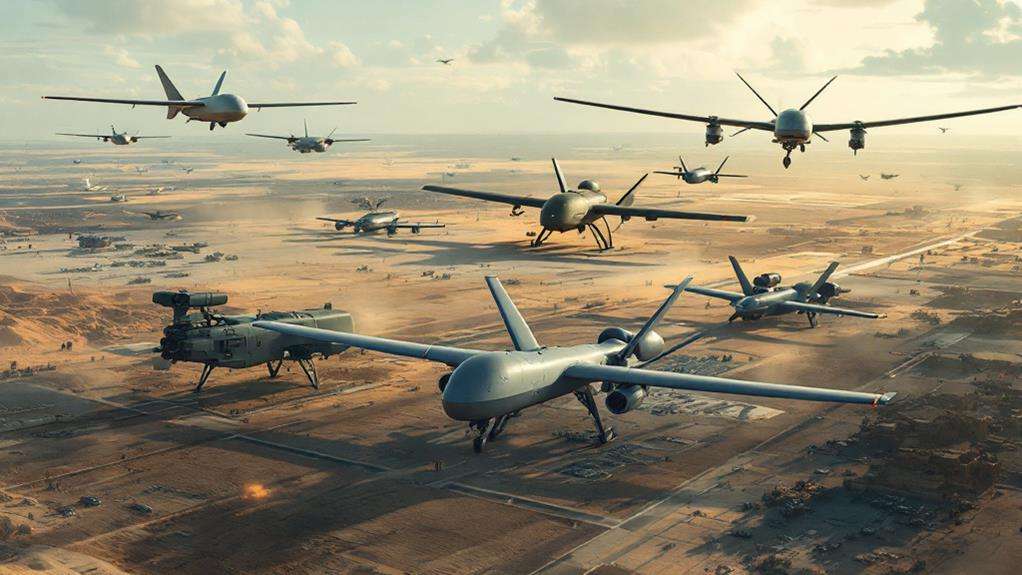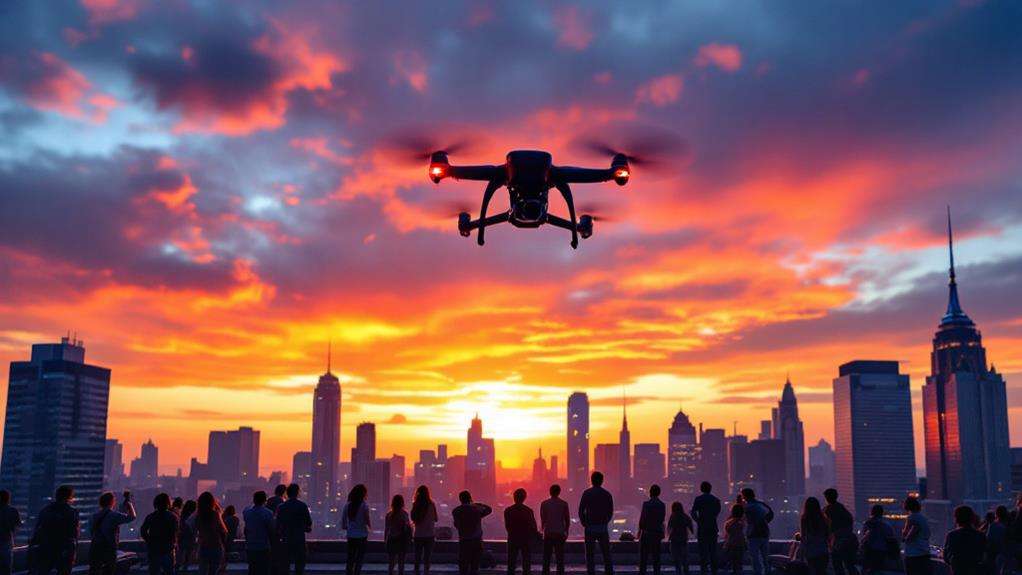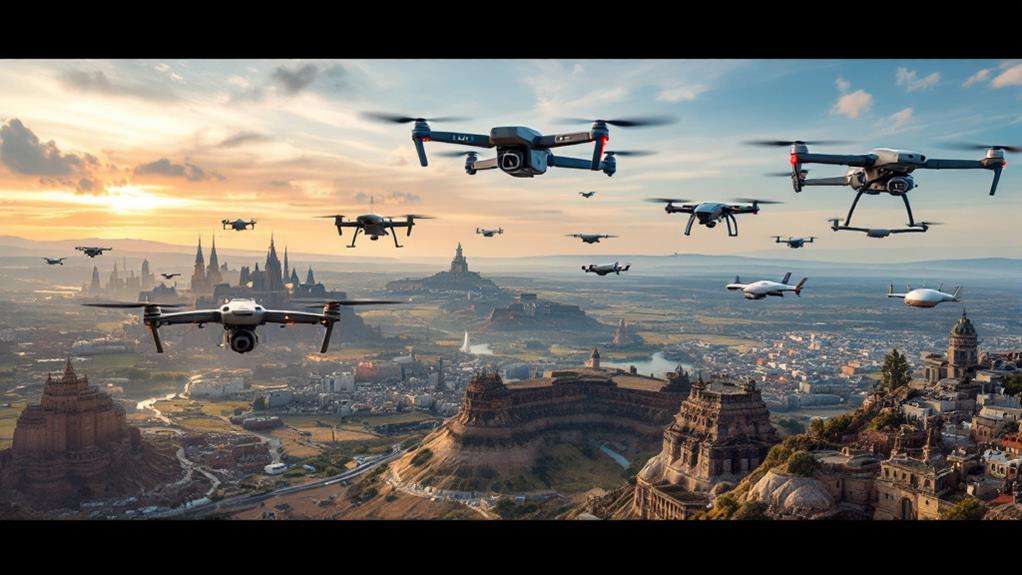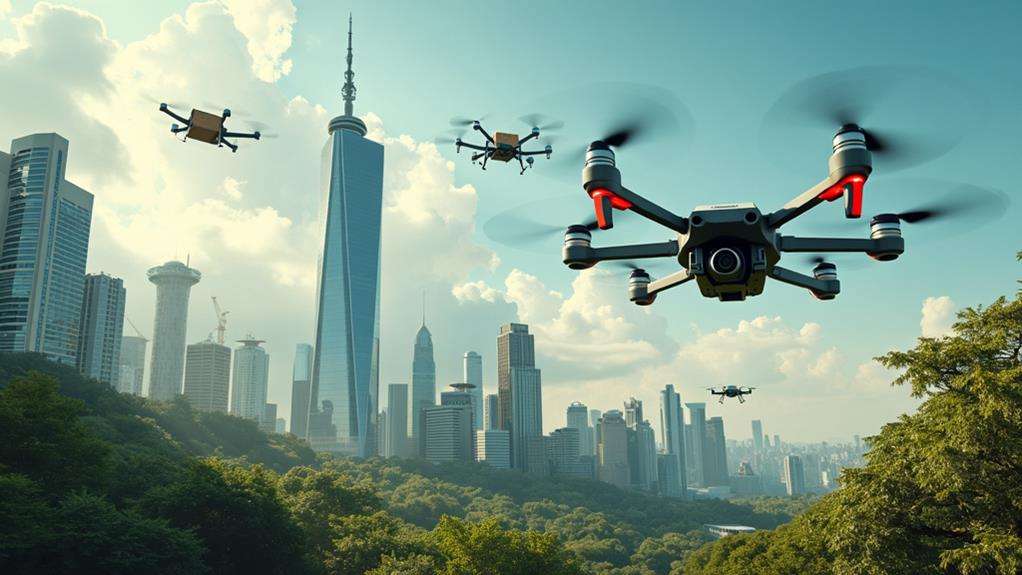When Did Police Start Using Drones?
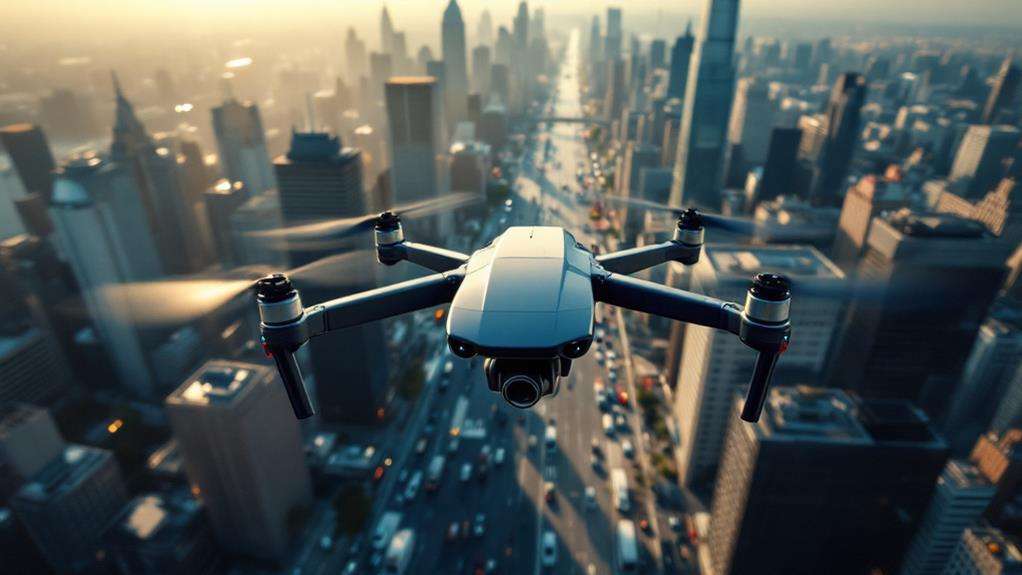
Police started using drones in 2005, with the first deployment of the Spectra model for search and rescue missions. Since then, drones have become indispensable for law enforcement, offering aerial surveillance and real-time situational awareness. The Chula Vista Police Department pioneered using drones as first responders in 2015, and as of January 2023, over 5,000 public safety agencies across the U.S. use them. Drones enhance operations like crime scene investigations and patrols, though they raise privacy concerns. If you're curious about how drones evolved into a staple of modern policing, there's much more to discover.
Key Takeaways
- Police began using drones in 2005 with the deployment of the Spectra drone for search and rescue missions.
- In 2011, law enforcement adapted a Predator drone to capture a cattle rustler, demonstrating civilian use.
- The Chula Vista Police Department initiated a drone program in December 2015, pioneering drones as first responders in the U.S.
- By early 2023, over 1,400 U.S. police departments had incorporated drones into their operations.
- A significant commercial drone boom in the mid-2000s increased accessibility for law enforcement agencies.
Early Drone Development
Drone technology has its roots stretching back over two centuries, beginning with the use of unmanned balloons for military operations. However, the journey from these primitive beginnings to modern drones is fascinating and intricate. During the 1970s, the development of small, fast, and easily controlled unmanned aerial systems set the stage for broader applications, particularly outside the military sphere. As technology advanced, these drones found their way into civilian realms, notably law enforcement. The use of drones in public safety and emergency response has showcased their ability to enhance operational efficiency and improve situational awareness. The early development of drones for civilian purposes saw significant milestones. One pivotal moment occurred in 2005 when the first law enforcement drone, named Spectra, was deployed for search and rescue missions. This marked a significant shift as police departments began recognizing the potential of drones to enhance their operational capabilities. Spectra's utilization highlighted how drones could support critical functions that required precision and quick response, such as locating missing persons.
Military Origins of Drones
Over two centuries ago, the concept of unmanned flight began with military ambitions in mind. The history of drones dates back to 1849 when Austria utilized unmanned balloons to drop bombs on Venice, marking the first military application of this technology. These early operations laid the groundwork for future advancements. By World War I, the military had introduced radio-controlled airplanes to target zeppelins, showcasing an evolution in drone technology. This innovation was pivotal, setting a precedent for the use of drones in military contexts. During the Vietnam War, the introduction of the Ryan Model 147 significantly improved reconnaissance capabilities, further advancing drone technology for military use. Fast forward to the 1970s, and drones had become smaller, faster, and easier to control, significantly enhancing military operations. These improvements in unmanned technology continued to evolve, eventually paving the way for civilian applications. The transition from military to civilian use became prominent in the mid-2000s. In 2005, the first law enforcement drone, Spectra, was introduced for search and rescue missions. This marked a significant shift in how drones could be utilized beyond the battlefield, influencing police and emergency operations.
The military origins of drones have profoundly impacted their use in law enforcement today, demonstrating a long-standing connection between military technology and civilian applications.
First Law Enforcement Use
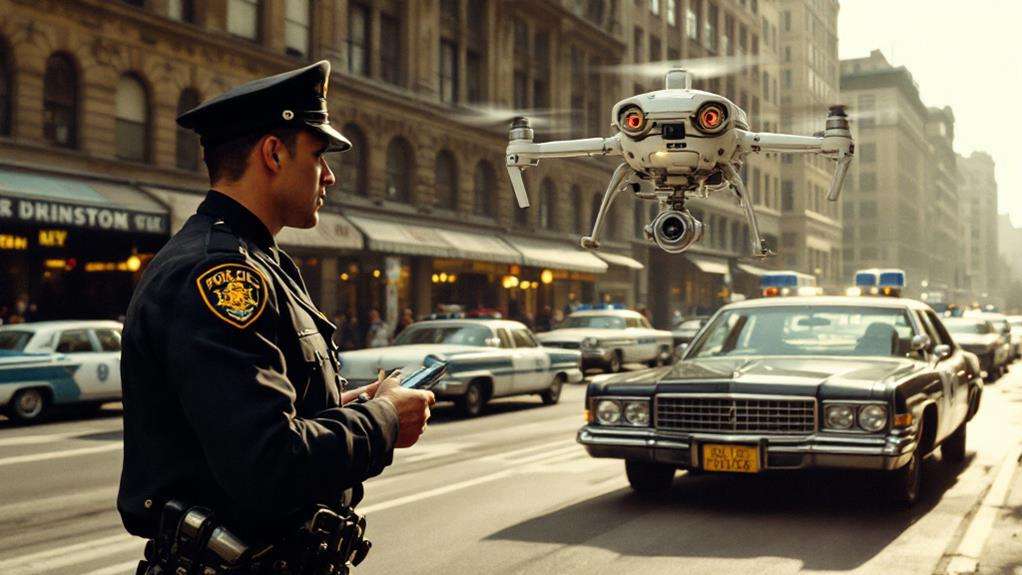
Kicking off the civilian use of drones in law enforcement, the introduction of Spectra in 2005 marked a pivotal moment. This drone, specifically designed for search and rescue operations, set the stage for the future integration of unmanned aerial vehicles in police work. You can trace the roots of drone use in law enforcement back to this significant development, highlighting how technology started to shape modern policing.
Fast forward to 2011, when law enforcement repurposed a Predator drone to apprehend a cattle rustler. This marked a notable shift, demonstrating how military-grade technology could be adapted for policing. It emphasized the potential of drones beyond search and rescue, showcasing their versatility.
In December 2015, the Chula Vista Police Department launched its drone program, becoming the first in the U.S. to deploy drones as first responders. This initiative highlighted a growing trend among police departments eager to incorporate drones into their operations. By January 2023, over 1,400 police departments in the U.S. had adopted this technology, benefiting from the surge in commercial drone production. This evolution underscores the expanding role of drones in enhancing law enforcement capabilities across the nation.
Rise of Civilian Drones
As the use of drones in law enforcement gained momentum, the rise of civilian drones began to reshape the landscape of policing. It all started with the Spectra drone in 2005, which marked the beginning of integrating drones into search and rescue operations. This was a key moment when civilian drones began to meet the operational needs of public safety agencies. By 2011, law enforcement's innovative use of a Predator drone to catch a cattle rustler demonstrated how military technology was being adapted for civilian use.
The mid-2000s saw a boom in commercial drone production, making drones technology more accessible to law enforcement agencies. The Chula Vista Police Department set a new standard in 2015 with their Drone as First Responder program. This initiative showcased the potential of drones in policing, conducting over 12,000 missions and proving their effectiveness in real-world scenarios.
As of January 2023, more than 5,000 public safety agencies across the U.S. have embraced drones to meet various operational needs, highlighting how civilian drones have become indispensable tools in modern policing. With drones now integral to their strategies, agencies continue to explore new ways to enhance public safety.
Key Technological Advancements
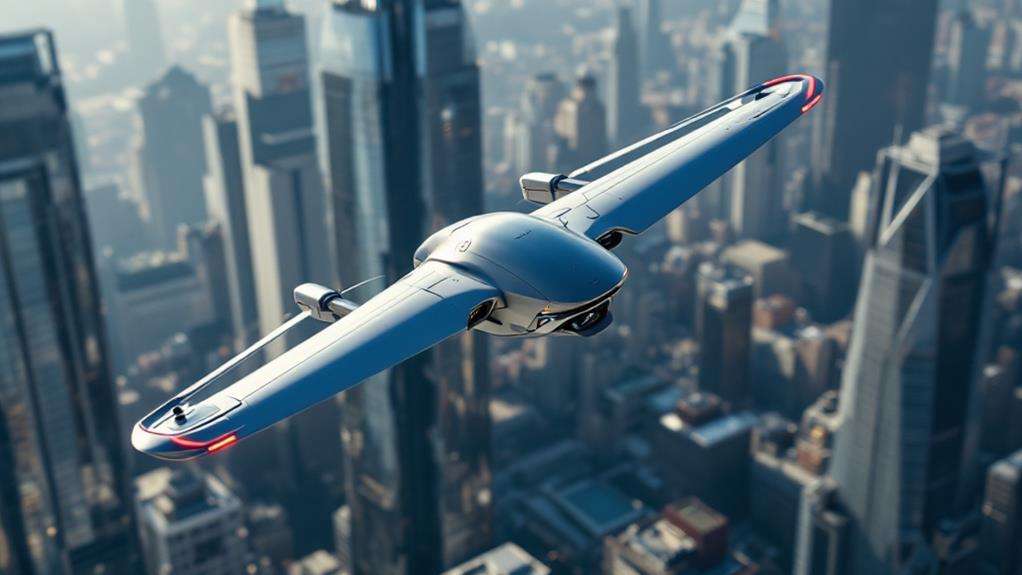
Drones in law enforcement have soared to new heights thanks to key technological advancements. The introduction of Spectra in 2005 marked the beginning of drone technology in police operations. You can trace the roots back to the 1990s when innovations like GPS and miniaturization set the stage for modern drones. By the mid-2000s, the production of commercial drones surged, offering law enforcement agencies powerful options for aerial surveillance and operational support.
The Chula Vista Police Department's Drone as First Responder (DFR) program, launched in 2015, is a shining example. This initiative has showcased the remarkable potential of drones for real-time situational awareness, completing over 12,000 missions by early 2023. As of January 2023, more than 5,000 public safety agencies in the U.S. had embraced drone technology, signaling a significant shift in how law enforcement operates.
| Year | Development | Impact |
|---|---|---|
| 1990s | GPS & Miniaturization | Enabled modern drones |
| 2005 | Spectra's Introduction | First civilian police drone use |
| Mid-2000s | Commercial Drone Surge | Expanded aerial options |
| 2015 | Chula Vista DFR Program | Real-time mission success |
| 2023 | 5,000+ Agencies | Widespread drone adoption |
These advancements have transformed how you view policing, emphasizing efficiency and safety.
Drone Applications in Policing
Innovation in policing has taken flight with the adoption of drones, revolutionizing how law enforcement agencies conduct their operations. Drones have become indispensable tools for police departments, enhancing their operational efficiency and situational awareness during missions. Since the mid-2000s, law enforcement has utilized drones for various applications like aerial patrols, surveillance, crime scene investigations, and monitoring large public events.
The Chula Vista Police Department was a pioneer in launching a drone program in December 2015. This initiative enabled real-time HD video streaming, which greatly aids in emergency responses and provides officers with crucial situational awareness. Drones equipped with thermal sensors have been particularly effective in search and rescue operations, reducing response times and increasing officer safety during critical incidents. By January 2023, over 5,000 public safety agencies had adopted drone technology, signifying its rapid expansion and essential role in modern law enforcement.
Using drones, police departments can efficiently monitor large areas, gather evidence, and respond to incidents with greater speed and precision. As a result, these flying devices have significantly improved how public safety agencies operate, making communities safer and better protected.
Privacy and Ethical Concerns
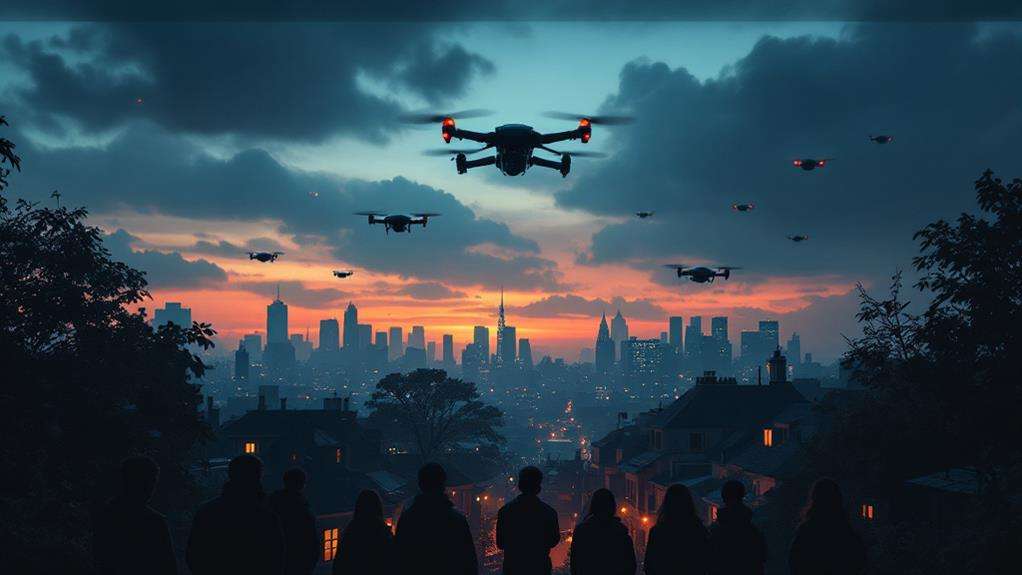
Concerns about privacy and ethics have surged as police departments increasingly deploy drones in their operations. You've probably noticed the public outcry growing louder, with organizations like the ACLU and the Electronic Frontier Foundation raising red flags about privacy concerns tied to police drone usage. People are worried about invasive surveillance practices that could infringe on individual freedoms. Legislative proposals, notably in California, aim to curb these fears by pushing for requirements like warrants for drone use. This reflects a clear demand for stronger privacy protections.
Meanwhile, the Department of Justice has taken steps to ensure oversight in drone operations, particularly by restricting funding for drones from potentially threatening foreign entities. This move emphasizes the importance of safeguarding civil liberties. There's also anxiety about the potential for drones to pair with mobile tracking, resulting in highly invasive monitoring.
Demands for transparency and accountability are evident in public petitions to the FAA, urging action on UAV privacy impacts. It's clear that the public wants to ensure police drone operations are conducted responsibly, with respect for privacy and civil rights at the forefront of discussions. The need for oversight and legislative action is more pressing than ever.
Regulatory Framework
With privacy and ethical concerns taking center stage, it's clear that a solid regulatory framework is vital to address these issues effectively. The FAA began regulating drone usage in 2016, crafting guidelines to ensure law enforcement agencies use UAV technology safely and legally. This regulatory framework requires local law enforcement to adhere to specific operational guidelines, like avoiding drone flights near airports, which helps maintain airspace safety.
The Congress Preventing Emerging Threats Act of 2018 further influences how drones are used by allowing federal agencies to disrupt rogue drones, impacting local law enforcement's ability to fully utilize UAV technology. Despite these restrictions, over 871,000 drones are registered in the U.S., with 307,000 certified Remote Pilots as of early 2023, showing the growing role of drones, including in law enforcement.
| Key Regulation | Description | Impact on Law Enforcement |
|---|---|---|
| FAA Guidelines (2016) | Safe and legal UAV operation | Comply with operational guidelines |
| Congress Preventing Emerging Threats | Disrupt rogue drones | Limits on UAV technology use |
| Legislative Proposals | Balance surveillance with privacy | Need for clear privacy protections |
Ongoing legislative proposals aim to balance surveillance capabilities with necessary privacy protections, ensuring that while drones are an essential tool, citizen privacy isn't compromised.
Future Trends in Drone Use

Many exciting advancements are shaping the future of drone use in law enforcement. With AI integration, drones are set to revolutionize surveillance capabilities, allowing for more autonomous operations. Imagine drones conducting routine surveillance without constant human intervention, freeing up officers for more critical tasks. The development of specialized drones tailored for specific law enforcement needs will undoubtedly enhance operational efficiency.
As you look ahead, expect research and development to push boundaries, aiming for fully autonomous drones. These drones could potentially operate independently, transforming areas like crowd management and emergency response. Collaboration between law enforcement agencies and technology firms will be crucial in driving these innovations forward.
However, it's not just about technological advancements. Regulatory frameworks are evolving to address the ethical implications of drone usage. Balancing effective law enforcement with civil liberties and privacy concerns will be paramount. It's essential for you to stay informed about these changes, as they will dictate how drones are utilized in the field.
In this rapidly changing landscape, understanding the intersection of technology and ethics will be key. The future of drones in law enforcement promises to be dynamic, blending cutting-edge innovation with critical ethical considerations.

